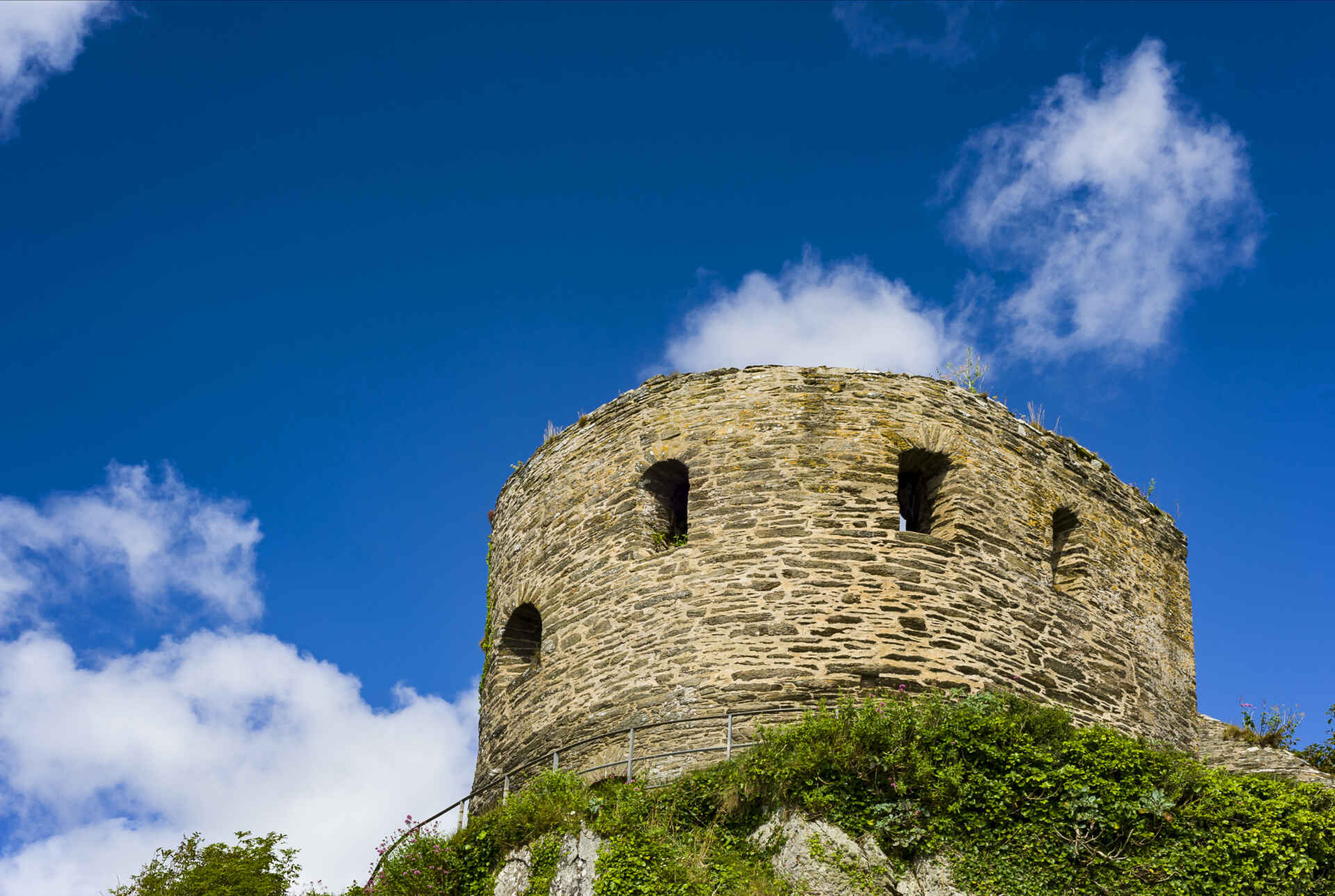The pretty seaside town of Fowey is one of Cornwall’s most ancient harbours with a long history of fishing, boat-building and brave seamanship – it has been well documented that men and ships from Fowey took part in the defensive of England during the Spanish Armada. The town was also once notorious for its ‘Fowey Gallents’, a band of roguish pirates who made their living from smuggling and raiding the coast of France.
High on the cliffs at the narrow entrance to this sheltered harbour stands St Catherine’s Castle which takes its name from a church that once stood on the site. St Catherine’s was built by King Henry VIII in the early 1530s, one of a pair of fortifications constructed to protect this important little port. It was part of a whole network of defences built around that time to defend the south coast from French invasion.
The building of the castle was supervised by Thomas Treffry, an ambitious local man, who used money taken from the recently dissolved Priory at Tywardreath to fund the work. Treffry went on to oversee the building of Pendennis and St Mawes castles too. But it is interesting to note that St Catherine’s was not in fact the first system of defence to be constructed at the opening to Fowey’s harbour.
Historic raids on Fowey
During the 14th and 15th centuries Fowey suffered frequent raids from ships from the Continent, bands of foreign sailors regularly assaulted the town. On one notorious occasion French pirates forced their way into Fowey and were only repelled by the tenacity of the townspeople who even managed to capture some of the marauders. Some reports say that to try to deter future attacks they threw boiling oil over them as punishment. Whatever the case, it was decided that the harbour needed to do something to improve its security.
In about 1380 two blockhouses were erected close to the water, one of either side of the harbour entrance, and coincidentally these were built by another Thomas Treffry, an ancestor to King Henry’s advisor, with money from public subscription. The blockhouses had thick walls and internal gun positions in which small calibre cannon were installed. The one on the Fowey side is a complete ruin but the Blockhouse at Polruan can still be visited today and is a formidable structure. It is said that a long, thick chain was slung between these two towers which could be raised across the channel to stop any enemy ships from entering the narrow waterway.
Then in the Tudor period St Catherine’s Castle replaced those now aging defences and it remained in use on and off for the next 500 years. The castle was put into service during the Crimean War and even became an anti-aircraft gun battery and observation post during the Second World War.
St Catherine’s Castle is now cared for by English Heritage and is free to visit.

